Dell XPS 13 Review
by Brett Howse on February 19, 2015 9:00 AM EST- Posted in
- Laptops
- Dell
- Ultrabook
- Broadwell-U
- XPS 13
Gaming Performance
Normally on an Ultrabook we would not dedicate an entire page to gaming performance, because the integrated GPUs do not perform very well on our gaming tests. However, with this being our first example of Broadwell-U, it is a good time to revisit this and see how the new graphics capabilities of Broadwell compare to the Haswell processors.
With the Core i5-5200U in both of the XPS 13s that we received, we have 24 execution units, compared to only 20 on Haswell-U. In addition, the 14nm process should help with throttling. The FHD model (1920x1080) arrived with a two 2GB memory modules and the QHD+ version came with 2 x 4GB.
First, let's look at the synthetic benchmarks, starting with 3DMark and then moving on to GFXBench.
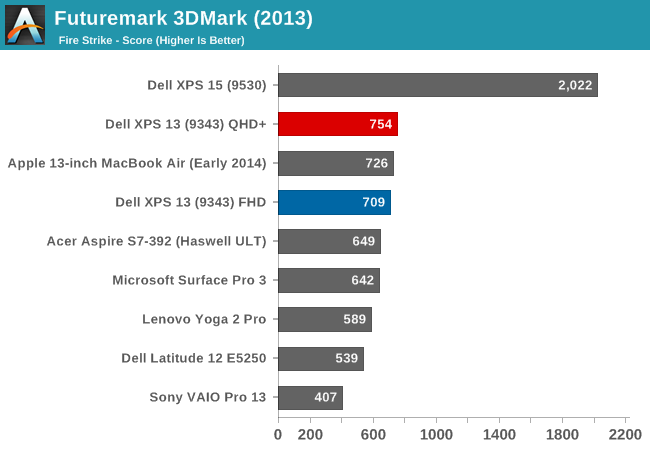
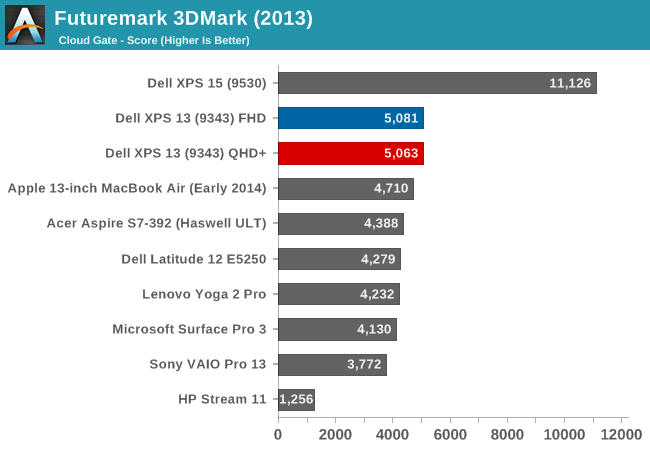
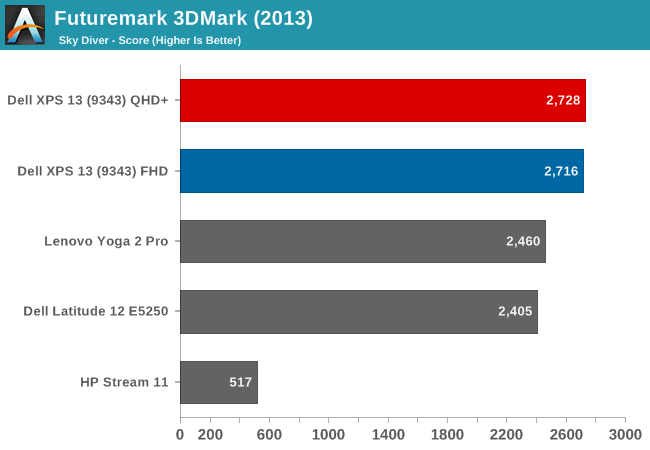

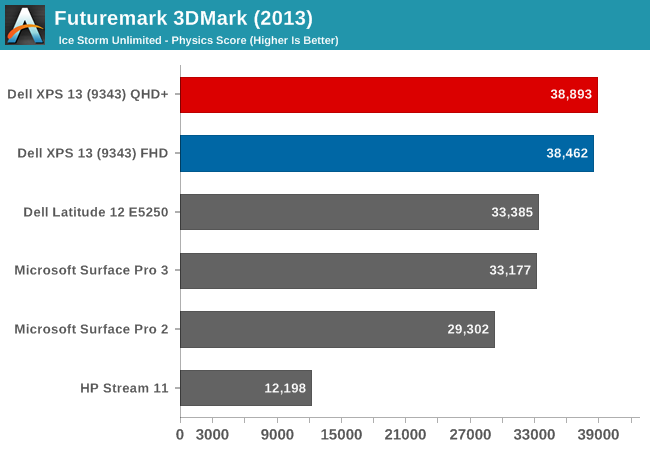
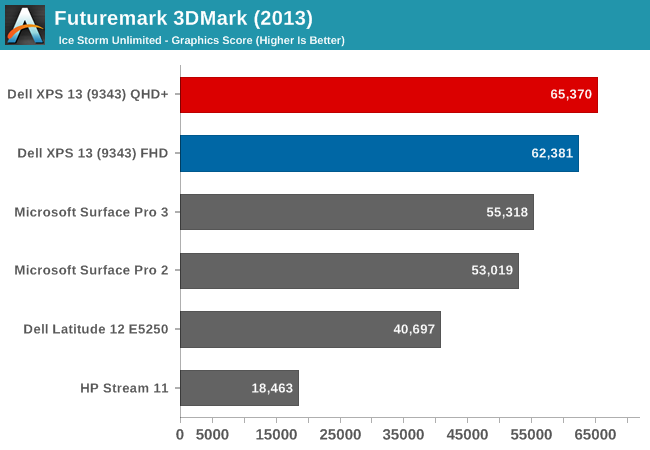
The 3DMark results begin to show the increased GPU performance of the Gen8 graphics. Broadwell-U outperforms all of the Haswell-U parts on all of the tests, and the QHD+ model gave a fraction more performance as well in a few tests.

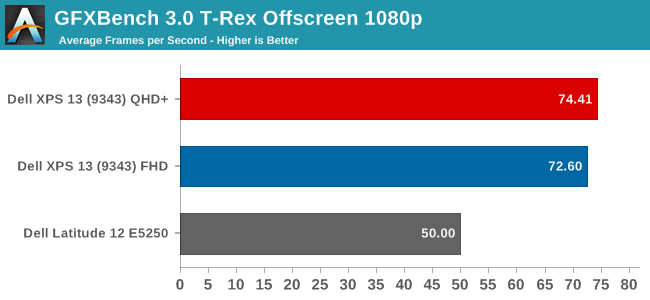

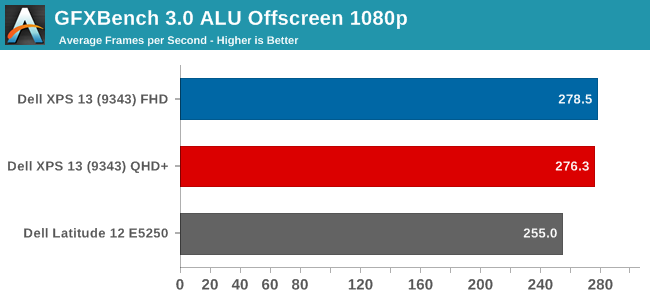
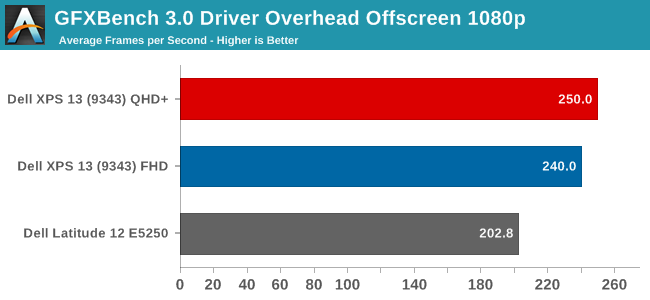
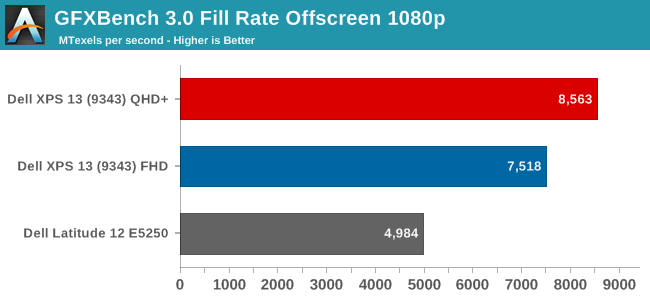
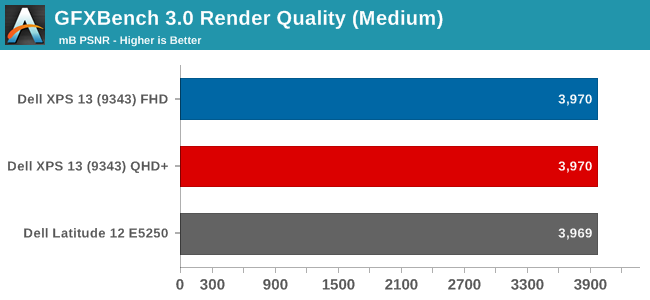
The initial results for the new GPU look pretty good, with the new GPU soundly beating the Haswell-U parts. The HP Stream 11, with just 4 EUs, trails quite far behind. GFXBench is one of our newer benchmark choices for Windows 8, and we will add more data as we get a few more devices to test.
Next, let's look at our gaming benchmarks. Due to the low performance of the integrated GPUs, I just ran our gaming tests at the Value (1366x768 ~Medium) settings.

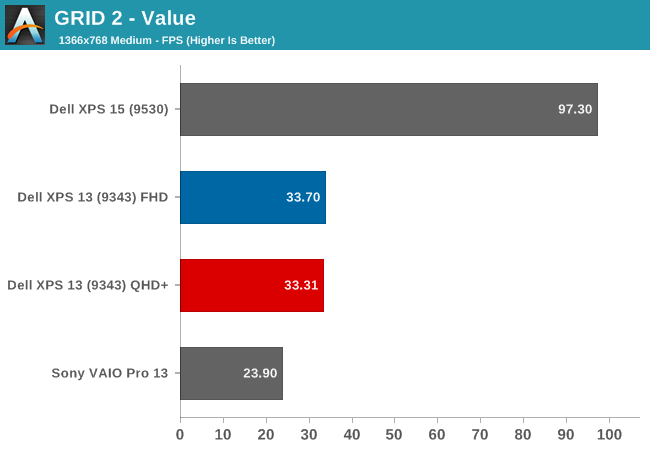

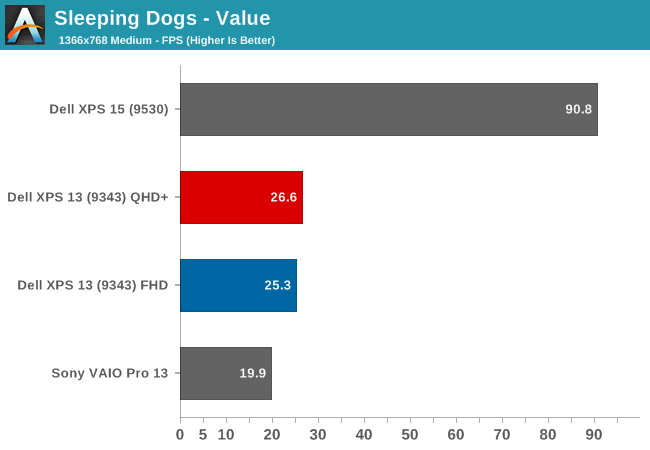
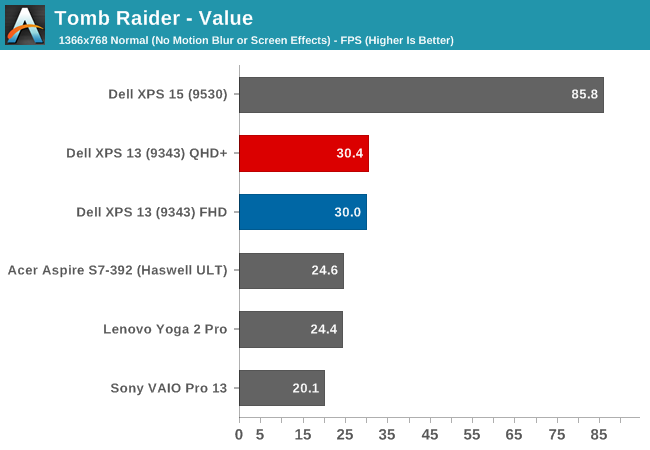
Here we can see once again that the new GPU is certainly stronger, but it is still not quite enough to make any of these games very playable on our Value settings. The Dell XPS 15, with its discrete GPU, carries a huge lead over the integrated GPU offerings. Still, the new Gen8 Graphics with more execution units per processor, as well as a change to the architecture of each execution unit, has made a healthy improvement. The new GPU has only eight EUs per sub-slice now, as compared to ten in Haswell-U, which help in many workloads. Ian has a nice writeup on the changes.
However, our gaming benchmarks are not tested at the lowest possible settings. All of the benchmarks start at 1366x768 with medium settings, so let's drop down another notch.
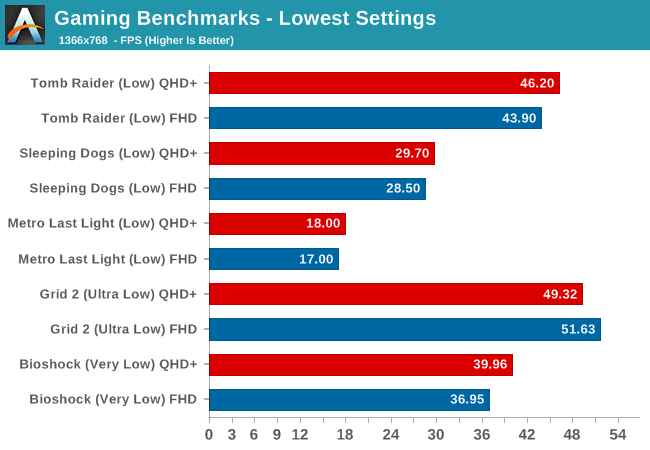
By setting the games to their lowest settings, some of them are now playable. We are still a long ways off of the performance of a discrete GPU, but slowly integrated graphics are improving.
Finally, we have a new gaming benchmark to add to our repertoire. Anand first used the DOTA 2 bench for the Surface Pro 3 review and it will be our go-to benchmark for devices like this without a discrete GPU. Our Value setting will be 1366x768 with all options off, low quality shadows, and medium textures. Midrange will be 1600x900 with all options enabled, medium shadows, and medium textures, and Enthusiast will be 1920x1080 with all options maxed out.
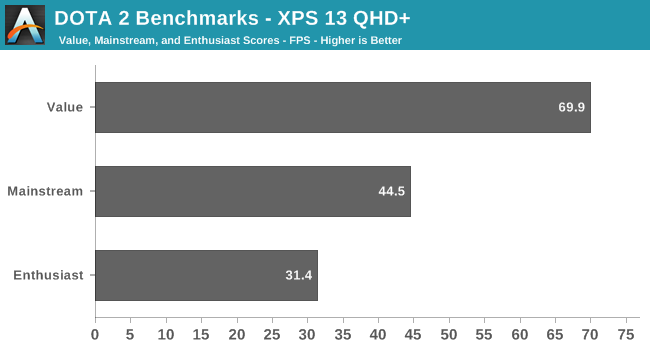
We do not have any other comparison points at the moment, but it is very clear that a game like DOTA 2 is very playable on a device with an integrated GPU. Frame rates, even with good settings, are very reasonable.
So Broadwell has raised the stakes again, but the end result is Intel's Integrated GPU is still not going to let you play AAA titles with good frame rates. Hopefully we can get some good comparisons between Broadwell-U and the AMD APUs in the near future. It will also be interesting to see what happens on the higher wattage Broadwell parts, some of which will contain significantly more EUs.










201 Comments
View All Comments
jospoortvliet - Friday, March 27, 2015 - link
Somebody bothered, years ago: Samsung series 9. Where they beat Dell to small bezels, they also announced the series 9 2015 model in December 2014: 12" screen, under 1 kg (2 lbs), passively cooled core M, high res screen and long battery life. Yeah, that is Apple's new MacBook, just three months earlier.Series 9 had been and continues to be ahead 😃
jospoortvliet - Friday, March 27, 2015 - link
Somebody bothered, years ago: Samsung series 9. Where they beat Dell to small bezels, they also announced the series 9 2015 model in December 2014: 12" screen, under 1 kg (2 lbs), passively cooled core M, high res screen and long battery life. Yeah, that is Apple's new MacBook, just three months earlier.Series 9 had been and continues to be ahead 😃
retrospooty - Thursday, February 19, 2015 - link
Looks like some great specs and a great laptop... Hopefully it doesn't suffer from the odd glitches and high fail rates that some (not all) Dell products suffer from. Time will tell.programcsharp - Thursday, February 19, 2015 - link
I like this, but what I really want is a 15" version with a bit more oomph. The 13" ends up being cute but pricey.Do a 15" QHD+ version with an i7, 512gb ssd and 32 gb RAM and now we're talking.
esterhasz - Thursday, February 19, 2015 - link
Not to forget: all you're saying, and in the footprint of a 13" machine!andrewaggb - Thursday, February 19, 2015 - link
agreed. A 15" (13" frame) machine would be great.jeffkibuule - Thursday, February 19, 2015 - link
Quad core Broadwell chips still haven't shipped, which is why we probably haven't seen a new 15" laptop from any major OEM yet.I'm also not sure we will get 32GB in a mainstream laptop yet, seems 16GB is still the top for the high end. Maybe with DDR4?
UtilityMax - Wednesday, February 25, 2015 - link
The statement that a 15 inch laptop needs a quad-core CPU is a little perplexing. The only quad-core Intel CPUs for laptops are the high wattage versions of the Core i7 CPUs, and they represent a valuable but very small portion of the market. More and more high end laptops ship with the "U" series if Core i7 CPUs, which are dual core, even in machines that are meant to replace quad-core offerings. The value is multiple cores is seriously over-hyped as far as desktops are concerned. Lots of applications are still single threaded, or multithreaded where one core still bottlenecks the main thread. Two fast cores are plenty for most laptop and tablet users, specially if that saves battery life.extide - Thursday, February 19, 2015 - link
Yeah, 8GB is just not going to do it for me these days. 16GB min, and 32GB preferred. Also I would like a 35w quad core, instead of a U-series. However I DO NOT want discrete graphics! It seems like pretty much all laptops with 35/45w quads have discreet graphics as well. I think Clevo makes a model (Haswell) that is like this, though. Although Clevo machines are great in the fact you can customize the crap out of them, their all-plastic build makes them a bit fragile. I have a P150EM (Ivy Bridge) and I am nearly afraid to take it around much, because I don't want it to get damaged, vs my work laptop which is a Latitude E6530 which is a straight up tank, I mean I can/have dropped it, kids walk on top of it, and no damage whatsoever. Any of that crap to my P150EM, and something will break!aryonoco - Thursday, February 19, 2015 - link
I would have bought this laptop (with i5, QHD display and 256GB SSD) in an instant if it had 16GB version.The way I use my computer, I've got a lot of applications and generally over 20 tabs open at any times, sometimes 50-60 when I'm in the middle of research. I just can't live with 8GB.
Pity, cause it's an excellent laptop otherwise. Maybe the Skylake update will bring a 16GB option.